The Prediction of Calorific Value of Carbonized Solid Fuel Produced from Refuse-Derived Fuel in the Low-Temperature Pyrolysis in CO2
Ewa Syguła, Kacper Świechowski, Paweł Stępień, Jacek A. Kozieł, Andrzej Białowiec
Materials
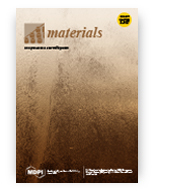 The decrease in the calorific value of refuse-derived fuel (RDF) is an unintended outcome of the progress made toward more sustainable waste management. Plastics and paper separation and recycling leads to the overall decrease in waste’s calorific value, further limiting its applicability for thermal treatment. Pyrolysis has been proposed to densify energy in RDF and generate carbonized solid fuel (CSF). The challenge is that the feedstock composition of RDF is variable and site-specific. Therefore, the optimal pyrolysis conditions have to be established every time, depending on feedstock composition. In this research, we developed a model to predict the higher heating value (HHV) of the RDF composed of eight morphological refuse groups after low-temperature pyrolysis in CO2 (300–500 °C and 60 min) into CSF. The model considers cardboard, fabric, kitchen waste, paper, plastic, rubber, PAP/AL/PE (paper/aluminum/polyethylene) composite packaging pack, and wood, pyrolysis temperature, and residence time. The determination coefficients (R2) and Akaike information criteria were used for selecting the best model among four mathematical functions: (I) linear, (II) second-order polynomial, (III) factorial regression, and (IV) quadratic regression. For each RDF waste component, among these four models, the one best fitted to the experimental data was chosen; then, these models were integrated into the general model that predicts the HHV of CSF from the blends of RDF. The general model was validated experimentally by the application to the RDF blends. The validation revealed that the model explains 70–75% CSF HHV data variability. The results show that the optimal pyrolysis conditions depend on the most abundant waste in the waste mixture. High-quality CSF can be obtained from wastes such as paper, carton, plastic, and rubber when processed at relatively low temperatures (300 °C), whereas wastes such as fabrics and wood require higher temperatures (500 °C). The developed model showed that it is possible to achieve the CSF with the highest HHV value by optimizing the pyrolysis of RDF with the process temperature, residence time, and feedstock blends pretreatment.
The decrease in the calorific value of refuse-derived fuel (RDF) is an unintended outcome of the progress made toward more sustainable waste management. Plastics and paper separation and recycling leads to the overall decrease in waste’s calorific value, further limiting its applicability for thermal treatment. Pyrolysis has been proposed to densify energy in RDF and generate carbonized solid fuel (CSF). The challenge is that the feedstock composition of RDF is variable and site-specific. Therefore, the optimal pyrolysis conditions have to be established every time, depending on feedstock composition. In this research, we developed a model to predict the higher heating value (HHV) of the RDF composed of eight morphological refuse groups after low-temperature pyrolysis in CO2 (300–500 °C and 60 min) into CSF. The model considers cardboard, fabric, kitchen waste, paper, plastic, rubber, PAP/AL/PE (paper/aluminum/polyethylene) composite packaging pack, and wood, pyrolysis temperature, and residence time. The determination coefficients (R2) and Akaike information criteria were used for selecting the best model among four mathematical functions: (I) linear, (II) second-order polynomial, (III) factorial regression, and (IV) quadratic regression. For each RDF waste component, among these four models, the one best fitted to the experimental data was chosen; then, these models were integrated into the general model that predicts the HHV of CSF from the blends of RDF. The general model was validated experimentally by the application to the RDF blends. The validation revealed that the model explains 70–75% CSF HHV data variability. The results show that the optimal pyrolysis conditions depend on the most abundant waste in the waste mixture. High-quality CSF can be obtained from wastes such as paper, carton, plastic, and rubber when processed at relatively low temperatures (300 °C), whereas wastes such as fabrics and wood require higher temperatures (500 °C). The developed model showed that it is possible to achieve the CSF with the highest HHV value by optimizing the pyrolysis of RDF with the process temperature, residence time, and feedstock blends pretreatment.
10.3390/ma14010049
The effect of changes in cardiovascular activity on corneal biomechanics and pulsation in rabbits
Agnieszka Antończyk, Dominika Kubiak-Nowak, Wojciech Borawski, Zdzisław Kiełbowicz, Monika Danielewska
Scientific Reports
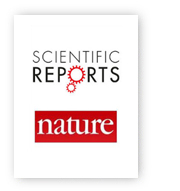 The aim was to assess the relationships between cardiovascular activity, corneal pulse characteristics, and corneal biomechanics in rabbits. Seventeen rabbits were randomly assigned to one of two anesthetic regimens to induce differences in arterial blood pressure and heart rate. Experimental protocol included measuring blood flow parameters in the ophthalmic artery by color Doppler imaging, corneal biomechanical parameters using a non-contact tonometer Corvis ST, and the corneal pulse (CP) signal using a non-contact ultrasonic technique. Statistically significantly lower mean values of normalized amplitudes of higher CP harmonics and changes in eight of the twelve corneal biomechanical parameters were observed in the rabbit group with lower arterial blood pressure and higher heart rate, intraocular pressure, and resistive index. The results of partial correlations showed that the CP signal energy and amplitude of its first harmonic correlate with the resistive index, diastolic and mean arterial pressures, whereas no statistically significant correlation was found between any of the CP parameters and intraocular pressure. Our pilot study indicates, for the first time, that non-contact and continuous measuring of corneal pulse allows indirectly assessing changes in cardiovascular activity when the confounding effect of intraocular pressure is eliminated.
The aim was to assess the relationships between cardiovascular activity, corneal pulse characteristics, and corneal biomechanics in rabbits. Seventeen rabbits were randomly assigned to one of two anesthetic regimens to induce differences in arterial blood pressure and heart rate. Experimental protocol included measuring blood flow parameters in the ophthalmic artery by color Doppler imaging, corneal biomechanical parameters using a non-contact tonometer Corvis ST, and the corneal pulse (CP) signal using a non-contact ultrasonic technique. Statistically significantly lower mean values of normalized amplitudes of higher CP harmonics and changes in eight of the twelve corneal biomechanical parameters were observed in the rabbit group with lower arterial blood pressure and higher heart rate, intraocular pressure, and resistive index. The results of partial correlations showed that the CP signal energy and amplitude of its first harmonic correlate with the resistive index, diastolic and mean arterial pressures, whereas no statistically significant correlation was found between any of the CP parameters and intraocular pressure. Our pilot study indicates, for the first time, that non-contact and continuous measuring of corneal pulse allows indirectly assessing changes in cardiovascular activity when the confounding effect of intraocular pressure is eliminated.
10.1038/s41598-020-79219-9
Sub-daily polar motion from GPS, GLONASS, and Galileo
Radosław Zajdel, Krzysztof Sośnica, Grzegorz Bury, Rolf Dach, Lars Prange, Kamil Kaźmierski
Journal of Geodesy
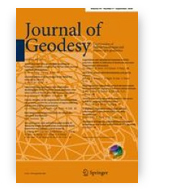 We derive an empirical model of the sub-daily polar motion (PM) based on the multi-GNSS processing incorporating GPS, GLONASS, and Galileo observations. The sub-daily PM model is based on 3-year multi-GNSS solutions with a 2 h temporal resolution. Firstly, we discuss differences in sub-daily PM estimates delivered from individual GNSS constellations, including GPS, GLONASS, Galileo, and the combined multi-GNSS solutions. Secondly, we evaluate the consistency between the GNSS-based estimates of the sub-daily PM with three independent models, i.e., the model recommended in the International Earth Rotation and Reference Systems Service (IERS) 2010 Conventions, the Desai–Sibois model, and the Gipson model. The sub-daily PM estimates, which are derived from system-specific solutions, are inherently affected by artificial non-tidal signals. These signals arise mainly from the resonance between the Earth rotation period and the satellite revolution period. We found strong spurious signals in GLONASS-based and Galileo-based results with amplitudes up to 30 µas. The combined multi-GNSS solution delivers the best estimates and the best consistency of the sub-daily PM with external geophysical and empirical models. Moreover, the impact of the non-tidal spurious signals in the frequency domain diminishes in the multi-GNSS combination. After the recovery of the tidal coefficients for 38 tides, we infer better consistency of the GNSS-based empirical models with the new Desai–Sibois model than the model recommended in the IERS 2010 Conventions. The consistency with the Desai–Sibois model, in terms of the inter-quartile ranges of tidal amplitude differences, reaches the level of 1.6, 5.7, 6.3, 2.2 µas for the prograde diurnal tidal terms and 1.2/2.1, 2.3/6.0, 2.6/5.5, 2.1/5.1 µas for prograde/retrograde semi-diurnal tidal terms, for the combined multi-GNSS, GPS, GLONASS, and Galileo solutions, respectively.
We derive an empirical model of the sub-daily polar motion (PM) based on the multi-GNSS processing incorporating GPS, GLONASS, and Galileo observations. The sub-daily PM model is based on 3-year multi-GNSS solutions with a 2 h temporal resolution. Firstly, we discuss differences in sub-daily PM estimates delivered from individual GNSS constellations, including GPS, GLONASS, Galileo, and the combined multi-GNSS solutions. Secondly, we evaluate the consistency between the GNSS-based estimates of the sub-daily PM with three independent models, i.e., the model recommended in the International Earth Rotation and Reference Systems Service (IERS) 2010 Conventions, the Desai–Sibois model, and the Gipson model. The sub-daily PM estimates, which are derived from system-specific solutions, are inherently affected by artificial non-tidal signals. These signals arise mainly from the resonance between the Earth rotation period and the satellite revolution period. We found strong spurious signals in GLONASS-based and Galileo-based results with amplitudes up to 30 µas. The combined multi-GNSS solution delivers the best estimates and the best consistency of the sub-daily PM with external geophysical and empirical models. Moreover, the impact of the non-tidal spurious signals in the frequency domain diminishes in the multi-GNSS combination. After the recovery of the tidal coefficients for 38 tides, we infer better consistency of the GNSS-based empirical models with the new Desai–Sibois model than the model recommended in the IERS 2010 Conventions. The consistency with the Desai–Sibois model, in terms of the inter-quartile ranges of tidal amplitude differences, reaches the level of 1.6, 5.7, 6.3, 2.2 µas for the prograde diurnal tidal terms and 1.2/2.1, 2.3/6.0, 2.6/5.5, 2.1/5.1 µas for prograde/retrograde semi-diurnal tidal terms, for the combined multi-GNSS, GPS, GLONASS, and Galileo solutions, respectively.
10.1007/s00190-020-01453-w
Novel 1,3,4-Oxadiazole Derivatives of Pyrrolo[3,4-d]pyridazinone Exert Antinociceptive Activity in the Tail-Flick and Formalin Test in Rodents and Reveal Reduced Gastrotoxicity
Marta Szandruk-Bender, Benita Wiatrak, Łukasz Szczukowski, Piotr Świątek, Maria Rutkowska, Stanisław Dzimira, Anna Merwid-Ląd, Maciej Danielewski, Adam Szeląg
International Journal of Molecular Sciences
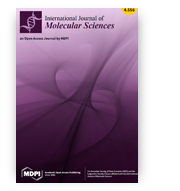 Despite the availability of the current drug arsenal for pain management, there is still a clinical need to identify new, more effective, and safer analgesics. Based on our earlier study, newly synthesized 1,3,4-oxadiazole derivatives of pyrrolo[3,4-d]pyridazinone, especially 10b and 13b, seem to be promising as potential analgesics. The current study was designed to investigate whether novel derivatives attenuate nociceptive response in animals subjected to thermal or chemical noxious stimulus, and to compare this effect to reference drugs. The antinociceptive effect of novel compounds was studied using the tail-flick and formalin test. Pretreatment with novel compounds at all studied doses increased the latency time in the tail-flick test and decreased the licking time during the early phase of the formalin test. New derivatives given at the medium and high doses also reduced the late phase of the formalin test. The achieved results indicate that new derivatives dose-dependently attenuate nociceptive response in both models of pain and exert a lack of gastrotoxicity. Both studied compounds act more effciently than indomethacin, but not morphine. Compound 13b at the high dose exerts the greatest antinociceptive effect. It may be due to the reduction of nociceptor sensitization via prostaglandin E2 and myeloperoxidase levels decrease.
Despite the availability of the current drug arsenal for pain management, there is still a clinical need to identify new, more effective, and safer analgesics. Based on our earlier study, newly synthesized 1,3,4-oxadiazole derivatives of pyrrolo[3,4-d]pyridazinone, especially 10b and 13b, seem to be promising as potential analgesics. The current study was designed to investigate whether novel derivatives attenuate nociceptive response in animals subjected to thermal or chemical noxious stimulus, and to compare this effect to reference drugs. The antinociceptive effect of novel compounds was studied using the tail-flick and formalin test. Pretreatment with novel compounds at all studied doses increased the latency time in the tail-flick test and decreased the licking time during the early phase of the formalin test. New derivatives given at the medium and high doses also reduced the late phase of the formalin test. The achieved results indicate that new derivatives dose-dependently attenuate nociceptive response in both models of pain and exert a lack of gastrotoxicity. Both studied compounds act more effciently than indomethacin, but not morphine. Compound 13b at the high dose exerts the greatest antinociceptive effect. It may be due to the reduction of nociceptor sensitization via prostaglandin E2 and myeloperoxidase levels decrease.
10.3390/ijms21249685
Mathematical Modelling of the Mechanical Properties of Four Varieties of Brine Pickles Using Neural Networks
Katarzyna Pentoś, Dagmara Migut, Natalia Matłok, Józef Gorzelany
Acta Universitatis Cibiniensis - Series E: Food Technology
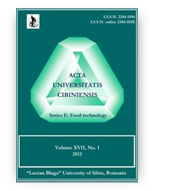 The study assesses the impact of selected fruit properties and the souring process parameters on the mechanical properties of four varieties of field cucumbers (Śremianin, Śremski, Polan and Izyd) harvested from 2014 to 2016. The analyses focused on the changes in the values of the puncture strength parameters of the peel and the mesocarp, the deformation from the moment of puncture and the energy needed to puncture the peel and the mesocarp of the selected cucumber varieties relative to the year of harvest, fruit size, type of brine, puncture location and souring time. Neural networks were used to model the relationships studied. Sensitivity analysis of the obtained models showed that the length fraction had the greatest impact on the puncture strength and the energy needed to puncture the peel and the mesocarp. On the other hand, deformation was most affected by the souring time and the brine composition.
The study assesses the impact of selected fruit properties and the souring process parameters on the mechanical properties of four varieties of field cucumbers (Śremianin, Śremski, Polan and Izyd) harvested from 2014 to 2016. The analyses focused on the changes in the values of the puncture strength parameters of the peel and the mesocarp, the deformation from the moment of puncture and the energy needed to puncture the peel and the mesocarp of the selected cucumber varieties relative to the year of harvest, fruit size, type of brine, puncture location and souring time. Neural networks were used to model the relationships studied. Sensitivity analysis of the obtained models showed that the length fraction had the greatest impact on the puncture strength and the energy needed to puncture the peel and the mesocarp. On the other hand, deformation was most affected by the souring time and the brine composition.
10.2478/aucft-2020-0023
Fe3O4 Magnetic Nanoparticles Under Static Magnetic Field Improve Osteogenesis via RUNX-2 and Inhibit Osteoclastogenesis by the Induction of Apoptosis
Krzysztof Marycz, Paulina Sobierajska, Rafał J. Wiglusz, Rafał Idczak, Jean-Marie Nedelec, Andrzej Fal, Katarzyna Kornicka-Garbowska
International journal of nanomedicine
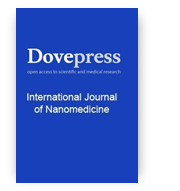 Purpose: The presented study aimed to investigate the effects of Fe 3O 4 nanoparticles and static magnetic field on osteoblast and osteoclasts’ metabolic activity. Methods: Magnetic nanoparticles were prepared by a wet chemical co-precipitation process and analyzed using X-ray powder diffraction, high-resolution transmission electron microscope (HRTEM), dynamic light scattering (DLS), laser Doppler velocimetry, Raman and the Mössbauer spectroscopy. In vitro experiments were performed using MC3T3, 4B12 and RAW 264.7 cell lines. Cells were cultured in the presence of nanoparticles and with or without exposure to the magnetic field. Proteins were investigated with Western blotting and immunofluorescence and Western blot. Gene expression was analyzed with a quantitative real-time polymerase chain reaction. Results: Obtained particles were in the nano-range (average size around 50 nm) and had a spherical-like morphology. The typical hydrodynamic size was in the range 178– 202 nm and Zeta potential equaled – 9.51 mV. Mössbauer spectrum corresponds to the Fe+3 ions in tetrahedral (A) and Fe+3 and Fe+2 ions in octahedral (B) sites of Fe 3O 4. In vitro study revealed cytocompatibility and anti-inflammatory effects of fabricated nanoparticles. Furthermore, it was shown that nanoparticles combined with magnetic field exposure enhance osteogenic differentiation of MC3T3 cells by upregulation of RUNX-2 activity. Under the same experimental condition, nanoparticles and magnetic field decreased osteoclastogenesis of 4B12 by the induction of apoptosis through the mitochondrial-dependent pathway. Conclusion: Fe 3O 4 nanoparticles together with magnetic field can be applied for the fabrication of novel biomaterials for the treatment of bone disorders related to bone loss in which a balance between bone-forming and resorbing cells is disturbed.
Purpose: The presented study aimed to investigate the effects of Fe 3O 4 nanoparticles and static magnetic field on osteoblast and osteoclasts’ metabolic activity. Methods: Magnetic nanoparticles were prepared by a wet chemical co-precipitation process and analyzed using X-ray powder diffraction, high-resolution transmission electron microscope (HRTEM), dynamic light scattering (DLS), laser Doppler velocimetry, Raman and the Mössbauer spectroscopy. In vitro experiments were performed using MC3T3, 4B12 and RAW 264.7 cell lines. Cells were cultured in the presence of nanoparticles and with or without exposure to the magnetic field. Proteins were investigated with Western blotting and immunofluorescence and Western blot. Gene expression was analyzed with a quantitative real-time polymerase chain reaction. Results: Obtained particles were in the nano-range (average size around 50 nm) and had a spherical-like morphology. The typical hydrodynamic size was in the range 178– 202 nm and Zeta potential equaled – 9.51 mV. Mössbauer spectrum corresponds to the Fe+3 ions in tetrahedral (A) and Fe+3 and Fe+2 ions in octahedral (B) sites of Fe 3O 4. In vitro study revealed cytocompatibility and anti-inflammatory effects of fabricated nanoparticles. Furthermore, it was shown that nanoparticles combined with magnetic field exposure enhance osteogenic differentiation of MC3T3 cells by upregulation of RUNX-2 activity. Under the same experimental condition, nanoparticles and magnetic field decreased osteoclastogenesis of 4B12 by the induction of apoptosis through the mitochondrial-dependent pathway. Conclusion: Fe 3O 4 nanoparticles together with magnetic field can be applied for the fabrication of novel biomaterials for the treatment of bone disorders related to bone loss in which a balance between bone-forming and resorbing cells is disturbed.
10.2147/IJN.S256542
Biological Characteristics and Osteogenic Differentiation of Ovine Bone Marrow Derived Mesenchymal Stem Cells Stimulated with FGF-2 and BMP-2
Sandra Gromolak, Agnieszka Krawczenko, Agnieszka Antończyk, Krzysztof Buczak, Zdzisław Kiełbowicz, Aleksandra Klimczak
International Journal of Molecular Sciences
 Cell-based therapies using mesenchymal stem cells (MSCs) are a promising tool in bone tissue engineering. Bone regeneration with MSCs involves a series of molecular processes leading to the activation of the osteoinductive cascade supported by bioactive factors, including fibroblast growth factor-2 (FGF-2) and bone morphogenetic protein-2 (BMP-2). In this study, we examined the biological characteristics and osteogenic differentiation potential of sheep bone marrow MSCs (BM-MSCs) treated with 20 ng/mL of FGF-2 and 100 ng/mL BMP-2 in vitro. The biological properties of osteogenic-induced BM-MSCs were investigated by assessing their morphology, proliferation, phenotype, and cytokine secretory profile. The osteogenic differentiation was characterized by Alizarin Red S staining, immunofluorescent staining of osteocalcin and collagen type I, and expression levels of genetic markers of osteogenesis. The results demonstrated that BM-MSCs treated with FGF-2 and BMP-2 maintained their primary MSC properties and improved their osteogenic differentiation capacity, as confirmed by increased expression of osteocalcin and collagen type I and upregulation of osteogenic-related gene markers BMP-2, Runx2, osterix, collagen type I, osteocalcin, and osteopontin. Furthermore, sheep BM-MSCs produced a variety of bioactive factors involved in osteogenesis, and supplementation of the culture medium with FGF-2 and BMP-2 affected the secretome profile of the cells. The results suggest that sheep osteogenic-induced BM-MSCs may be used as a cellular therapy to study bone repair in the preclinical large animal model.
Cell-based therapies using mesenchymal stem cells (MSCs) are a promising tool in bone tissue engineering. Bone regeneration with MSCs involves a series of molecular processes leading to the activation of the osteoinductive cascade supported by bioactive factors, including fibroblast growth factor-2 (FGF-2) and bone morphogenetic protein-2 (BMP-2). In this study, we examined the biological characteristics and osteogenic differentiation potential of sheep bone marrow MSCs (BM-MSCs) treated with 20 ng/mL of FGF-2 and 100 ng/mL BMP-2 in vitro. The biological properties of osteogenic-induced BM-MSCs were investigated by assessing their morphology, proliferation, phenotype, and cytokine secretory profile. The osteogenic differentiation was characterized by Alizarin Red S staining, immunofluorescent staining of osteocalcin and collagen type I, and expression levels of genetic markers of osteogenesis. The results demonstrated that BM-MSCs treated with FGF-2 and BMP-2 maintained their primary MSC properties and improved their osteogenic differentiation capacity, as confirmed by increased expression of osteocalcin and collagen type I and upregulation of osteogenic-related gene markers BMP-2, Runx2, osterix, collagen type I, osteocalcin, and osteopontin. Furthermore, sheep BM-MSCs produced a variety of bioactive factors involved in osteogenesis, and supplementation of the culture medium with FGF-2 and BMP-2 affected the secretome profile of the cells. The results suggest that sheep osteogenic-induced BM-MSCs may be used as a cellular therapy to study bone repair in the preclinical large animal model.
10.3390/ijms21249726
Assessment of Mechanical, Chemical, and Biological Properties of Ti-Nb-Zr Alloy for Medical Applications
Victoria Hoppe, Patrycja Szymczyk-Ziółkowska, Małgorzata Rusińska, Bogdan Dybała, Dominik Poradowski, Maciej Janeczek
Materials
 The purpose of this work is to obtain comprehensive reference data of the Ti-13Nb-13Zr alloy base material: its microstructure, mechanical, and physicochemical properties. In order to obtain extensive information on the tested materials, a number of examination methods were used, including SEM, XRD, and XPS to determine the phases occurring in the material, while mechanical properties were verified with static tensile, compression, and bending tests. Moreover, the alloy’s corrosion resistance in Ringer’s solution and the cytotoxicity were investigated using the MTT test. Studies have shown that this alloy has the structure α’, α, and β phases, indicating that parts of the β phase transformed to α’, which was confirmed by mechanical properties and the shape of fractures. Due to the good mechanical properties (E = 84.1 GPa), high corrosion resistance, as well as the lack of cytotoxicity on MC3T3 and NHDF cells, this alloy meets the requirements for medical implant materials. Ti-13Nb-13Zr alloy can be successfully used in implants, including bone tissue engineering products and dental applications.
The purpose of this work is to obtain comprehensive reference data of the Ti-13Nb-13Zr alloy base material: its microstructure, mechanical, and physicochemical properties. In order to obtain extensive information on the tested materials, a number of examination methods were used, including SEM, XRD, and XPS to determine the phases occurring in the material, while mechanical properties were verified with static tensile, compression, and bending tests. Moreover, the alloy’s corrosion resistance in Ringer’s solution and the cytotoxicity were investigated using the MTT test. Studies have shown that this alloy has the structure α’, α, and β phases, indicating that parts of the β phase transformed to α’, which was confirmed by mechanical properties and the shape of fractures. Due to the good mechanical properties (E = 84.1 GPa), high corrosion resistance, as well as the lack of cytotoxicity on MC3T3 and NHDF cells, this alloy meets the requirements for medical implant materials. Ti-13Nb-13Zr alloy can be successfully used in implants, including bone tissue engineering products and dental applications.
10.3390/ma14010126









